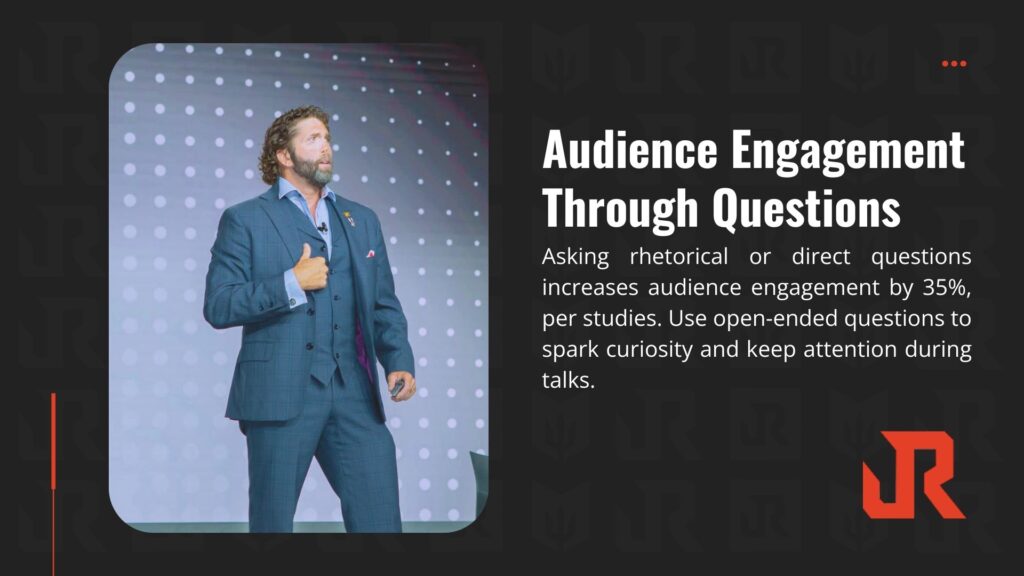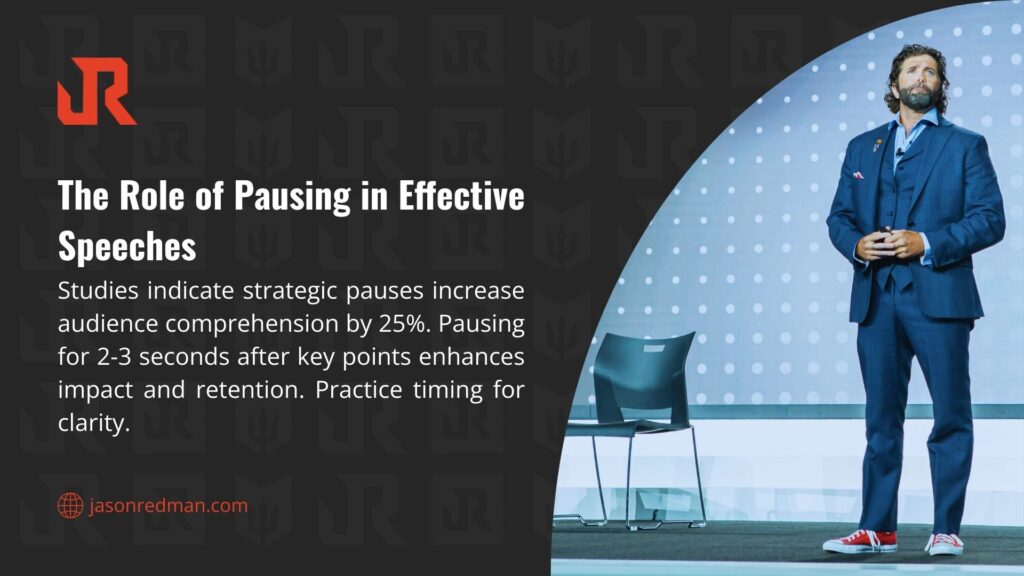The company CEO looked me dead in the eye and said, “Jason, I need you to fix this. My executives can present numbers, but they can’t inspire action. They’ve got the technical skills, but when they get in front of people, they fall apart.”
He was describing what I see in 90% of speakers: they are brilliant people who know their stuff but can’t communicate it effectively. They’ve never been taught how to improve public speaking systematically, so they wing it, hoping natural talent will carry them through.
But hope is not a strategy. Winging it is not a plan. And natural talent without proper training will only take you so far.
You want to know how to improve public speaking? Stop treating it like an art form and start treating it like what it really is: a tactical skill that can be developed through deliberate practice and systematic improvement.

Create a Good Starting Point
Before you can improve anything, you need to honestly assess where you are now. Most people avoid this step because it’s uncomfortable. They’d rather stay in denial about their speaking abilities than face the brutal facts about what needs work.
When I decided to become a speaker, I had to confront some uncomfortable realities. My jaw had been shattered. My speech was slurred. I had visible scars and limited mobility. But I also had something most speakers don’t…a story that could change lives.
The first step in learning how to improve public speaking is conducting an honest self-assessment:
Record yourself speaking for 10 minutes on any topic. Don’t prepare, don’t practice, just talk.
Then watch it back and note everything: vocal patterns, physical habits, filler words, eye contact, energy level. This baseline recording will show you exactly what you’re working with.
Identify your specific fear triggers. Is it the fear of public speaking in general, or specific aspects like Q&A sessions, large audiences, or technical presentations?
You can’t overcome what you can’t define.
Catalog your natural strengths. Maybe you’re naturally expressive with your hands, or you have a compelling personal story, or you’re great at explaining complex concepts simply. Build on these assets.
The SEAL Training Method for Speaker Development
In SEAL training, we don’t just throw recruits into combat and hope they figure it out. We use progressive skill building—master the basics, then advance to more complex scenarios. Learning how to improve public speaking follows the same progression.
Phase 1: Technical Fundamentals (Weeks 1-30)
Just like weapons training, you start with the basics until they become automatic. These public speaking tips form your foundation:
- Voice Control: Learn to project from your diaphragm, not your throat. Practice speaking in different volumes without straining. Eliminate filler words through deliberate awareness. Your voice is your primary tool; therefore, treat it like one.
- Physical Presence: Stand like you belong there. Keep your feet shoulder-width apart, shoulders back, and hands visible. Practice purposeful gestures that reinforce your message rather than distract from it.
- Eye Contact Patterns: Connect with individuals. Hold eye contact for 3-5 seconds with one person, then move to another. This creates the illusion of personal connection even in large groups.
- Breathing Techniques: Under stress, breathing becomes shallow and rushed. Practice diaphragmatic breathing before and during presentations. Four counts in, hold for four, out for six. This activates your parasympathetic nervous system and reduces anxiety.
| Skill Area | Daily Practice | Weekly Goal | Monthly Objective |
| Voice Projection | 10 minutes | Eliminate 50% of filler words | Clear, confident vocal delivery |
| Physical Presence | Mirror work (5 min) | Natural, purposeful gestures | Command presence |
| Eye Contact | Practice with video calls | Connect with individuals | Authentic audience connection |
| Breathing Control | 3 breathing exercises | Calm presentation state | Stress-free delivery |

Phase 2: Content Mastery (Weeks 4-8)
Technical skills mean nothing if your content doesn’t serve your audience. This is where most people think wrong; they focus on what they want to say instead of what the audience needs to hear.
Phase 3: Performance Under Pressure (Weeks 9-12)
This is where most training programs fail. They teach you skills in comfortable environments, then expect you to perform under pressure. That’s not how elite performance works. And to perform under pressure, you need to do the following:
- Progressive Exposure: Start speaking to small, friendly groups. Gradually increase audience size and stakes. Join Toastmasters. Volunteer for presentations at work. Speak at local business groups. Each exposure builds your pressure tolerance.
- Stress Inoculation: Practice your presentation while doing jumping jacks or after running stairs. If you can deliver your message while physically stressed, you can handle audience nerves.
- Scenario Training: Prepare for everything that can go wrong. Technology failures, hostile questions, unexpected interruptions. The more scenarios you’ve mentally rehearsed, the more adaptable you become.
Overcoming the Mental Game
The biggest barrier most people face is the mental warfare that happens before they even step on stage.
Fear of public speaking is normal, but it doesn’t have to be permanent. I’ve seen executives who were terrified of presentations become confident leaders through systematic exposure and skill building. The key is changing your relationship with fear.
Instead of trying to eliminate fear, learn to use it. That nervous energy can become intensity and passion if you channel it correctly. Some of my best presentations happened when I was nervous; the adrenaline helped me bring extra energy and authenticity to my delivery.
Reframe Your Mindset. You’re not performing for the audience, you’re serving them. You have valuable information, insights, or inspiration that they need. Focus on the mission, not your ego.
The more thoroughly you prepare, the more confident you become. Know your material so well that you could present it during a fire drill. My approach to leadership and change emphasizes the importance of choosing your direction and communicating it clearly—the same principle applies to presentations.

The Compound Effect of Communication Mastery
Learning how to improve public speaking is compounded into every area of your leadership and life. Better communication means more influence, stronger relationships, increased earning potential, and expanded opportunities.
I’ve watched quiet team members become confident leaders, struggling entrepreneurs become successful fundraisers, and nervous managers become inspiring executives.
Stop letting mediocre speaking skills limit your potential. Let’s work together to develop the commanding communication abilities that will elevate your influence, expand your opportunities, and help you lead with the confidence and clarity your team and organization needs.


